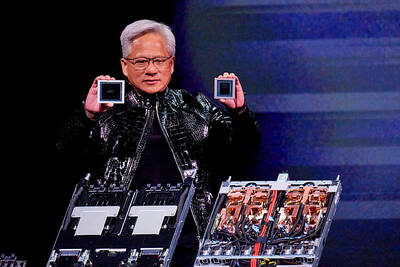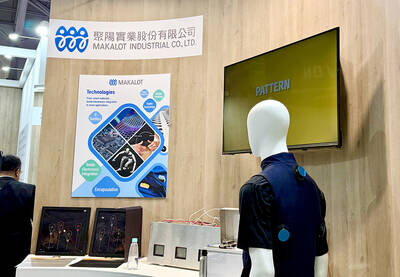Vietnam first for investment
Taiwan's investment in the major countries of Southeast Asia in the first half of this year totaled US$185.27 million, with Vietnam attracting US$131.5 million, according to government statistics released yesterday.
The statistics compiled by the Industrial Development and Investment Center of the Ministry of Economic Affairs indicate that Thailand came next with US$18.86 million, followed by Malaysia with US$15.41 million.
In terms of aggregate investment from Taiwan, however, Indonesia leads the list with US$12.88 billion, followed by Thailand with US$10.52 billion and Malaysia with US$9.2 billion.
Taiwan has recently adopted a "go south" policy to encourage enterprises to switch their investments from mainland China to Southeast Asia, but the policy suffered a major setback recently when President Chen Shui-bian (陳水扁) was forced to cancel a plan to visit Indonesia Dec. 15-17 to promote the policy. The incident might prompt Taipei to reconsider its "go south" policy, according to observers.
Opposition afraid of SOEs' debts
Several opposition legislators expressed worry yesterday about the debts of state-owned enterprises (SOEs), saying that the collective debts of the enterprises is as high as NT$17.3 trillion (US$494.28 billion), or more than 82 percent of their total assets.
Independent Legislator Sisy Chen (陳文茜) said that because of their poor financial states, the enterprises would be on the verge of collapse if they were not being bolstered by the government.
She suggested the government consider setting up a fund to write off the companies' debts.
Other legislators including Wang Chung-yu (王鍾渝), Chou Hsi-wei (周錫瑋) and Pong Chien-kuo (龐建國), said that of the 34 state-owned enterprises, the long-term debts of eight exceed the paid-in capital. Even Taiwan
Power Co's (台電) long-term debt is twice its paid-in capital. Kaohsiung Ammonium Sulfate Corp's (高雄硫酸錏) debt accounts for 82.63 percent of its paid-in capital.
Flat-panel shipments fall
Shipments of flat-panel displays for computer monitors and televisions by companies such as Samsung Electronics Co fell 8 percent in the third quarter because PC makers had excess inventory, a market researcher said.
The drop in shipments, which totaled 16.2 million units, was the steepest of the three quarter-on-quarter declines recorded in the last three years, said researcher DisplaySearch.
Compared with the third quarter last year, shipments rose 40 percent.
The weak demand for monitors and excess manufacturing capacity at makers of flat panels resulted in a price decline of 5 percent on average, compared with a 13 percent increase in the second quarter.
For the fourth quarter, prices may fall an additional 19 percent, which should stimulate demand and result in shipments increasing 12 percent, DisplaySearch predicted. Prices may stabilize in the first quarter.
NT dollar weakens
The NT dollar weakened after Standard & Poor's cut the nation's debt rating by one level, citing the government's "slow pace'' in carrying out banking and fiscal reforms.
The S&P rating cut "means the New Taiwan dollar may not be able to strengthen in coming days," said Tom Chou, a currency trader at the Taiwan Cooperative Bank (合作金庫).
The local currency fell NT$0.063 against its US counterpart to close at NT$34.848. Turnover was US$450.5 million, compared with the previous day's US$397 million.
The currency may fall to NT$34.90 by the end of the year, Chou said.
Agencies

Nvidia Corp chief executive officer Jensen Huang (黃仁勳) on Monday introduced the company’s latest supercomputer platform, featuring six new chips made by Taiwan Semiconductor Manufacturing Co (TSMC, 台積電), saying that it is now “in full production.” “If Vera Rubin is going to be in time for this year, it must be in production by now, and so, today I can tell you that Vera Rubin is in full production,” Huang said during his keynote speech at CES in Las Vegas. The rollout of six concurrent chips for Vera Rubin — the company’s next-generation artificial intelligence (AI) computing platform — marks a strategic

REVENUE PERFORMANCE: Cloud and network products, and electronic components saw strong increases, while smart consumer electronics and computing products fell Hon Hai Precision Industry Co (鴻海精密) yesterday posted 26.51 percent quarterly growth in revenue for last quarter to NT$2.6 trillion (US$82.44 billion), the strongest on record for the period and above expectations, but the company forecast a slight revenue dip this quarter due to seasonal factors. On an annual basis, revenue last quarter grew 22.07 percent, the company said. Analysts on average estimated about NT$2.4 trillion increase. Hon Hai, which assembles servers for Nvidia Corp and iPhones for Apple Inc, is expanding its capacity in the US, adding artificial intelligence (AI) server production in Wisconsin and Texas, where it operates established campuses. This

US President Donald Trump on Friday blocked US photonics firm HieFo Corp’s US$3 million acquisition of assets in New Jersey-based aerospace and defense specialist Emcore Corp, citing national security and China-related concerns. In an order released by the White House, Trump said HieFo was “controlled by a citizen of the People’s Republic of China” and that its 2024 acquisition of Emcore’s businesses led the US president to believe that it might “take action that threatens to impair the national security of the United States.” The order did not name the person or detail Trump’s concerns. “The Transaction is hereby prohibited,”

Garment maker Makalot Industrial Co (聚陽) yesterday reported lower-than-expected fourth-quarter revenue of NT$7.93 billion (US$251.44 million), down 9.48 percent from NT$8.76 billion a year earlier. On a quarterly basis, revenue fell 10.83 percent from NT$8.89 billion, company data showed. The figure was also lower than market expectations of NT$8.05 billion, according to data compiled by Yuanta Securities Investment and Consulting Co (元大投顧), which had projected NT$8.22 billion. Makalot’s revenue this quarter would likely increase by a mid-teens percentage as the industry is entering its high season, Yuanta said. Overall, Makalot’s revenue last year totaled NT$34.43 billion, down 3.08 percent from its record NT$35.52